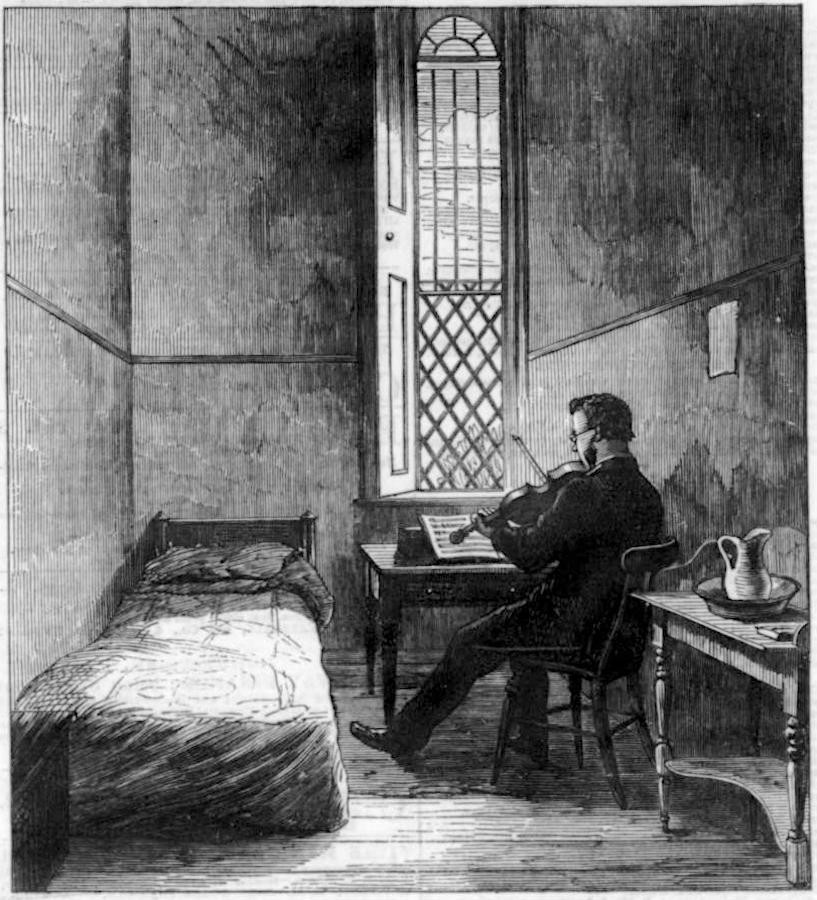Broadmoor was opened in 1863 as the first ever State Criminal Asylum. It was designed by Sir Joshua Jebb (1893-1863), who had previously designed Pentonville Prison. Jebb, who was Lieutenant-Colonel of the Royal Engineers, was also the Surveyor-General of Prisons. But his design for Broadmoor was less like a prison and more like one of the >Historic England's listing text of this historic building concludes that it reflects "a medical, rather than penal attitude towards the 500 male and female patients." High on a ridge, with terraces, extensive views and pleasant grounds, Broadmoor still operates as an establishment for high-security, mentally disturbed individuals, but has been redeveloped in recent years: part of the NHS West London Trust, the new Broadmoor Hospital opened close to the old buildings in December 2019. Since 2007, the facility has only served male patients. — Jacqueline Banerjee

THE treatment of the unhappy persons confined, by warrant of the Secretary of State for the Home Department, on account of their insanity being proved while they were in custody on criminal charges, has of late years engaged the attention of the Government. Several hundred patients of this description, including such notorious cases as those of Edward Oxford, who shot at the Queen; Captain Johnson, master of the ship Tory, who slaughtered some of his crew; and the young artist, Dadds [Richard Dadd]. who cut off his father's head, were formerly kept in a separate department of the Royal Hospital at Bethlem, while others were accommodated in an asylum near Salisbury. The new institution at Broadmoor, in the parish of Sandhurst, Berkshire, two miles from the Wellington College, on the Reading and Reigate Railway, was opened for their reception at the beginning of 1864, and all the criminal lunatics who were at Bethlem have been removed thither.
The situation is one of the most convenient for the purpose that could have been chosen within a moderate distance of London. The buildings, a general view of which is engraved on this page, were planned in isolated blocks, with a view to the more effectual separation of different classes of patients; and one block was built of grea strength, like a prison, for the special security of violent and dangerous men. It is probable, however, that extensive alterations will be found necessary in the internal arrangement of the buildings, as well as in the laying out of the surrounding land; the estate comprising 300 acres, of which only 100 acres are yet under cultivation.

Day-Room for Male Patients.
The medical superintendent, Dr. John Meyer, in his last annual report, states that the health of the establishment is not altogether satisfactory, twenty cases of fever having occurred in the blocks and in the cottages on the estate during the previous year, but only three of those cases were among the patients. He observes that there is a large extent of wet, undrained land in the immediate neighbourhood; and that the supply of water, being derived from the surface-drainage of the heath, contains an amount of organic matter. This, together with the insufficient day-room accommodation, especially for the female patients, in the winter months, and other faults in the buildings, may perhaps account for the unfavourable sanitary report. We give an illustration of one of the male patients’ day-rooms, and one of the dormitories for each sex. The average number of resident male patients is 328, and of females ninety-eight, but there is room for 500 altogether; eighteen died in the course of last year, and six were discharged; four attempted to escape, but did not succeed.


Left: Female Dormitory. Right: Male Dormitory.
Dr. Meyer's management seconded by Dr. Gibson, assistant medical officer; Mr. Orange, deputy superintendent; the Rev. J. T. Burt, chaplain; Mr. Charles Phelps, steward; and the other officers of the asylum. Many of the patients are employed, when in a fit condition, in various work about the garden and farm, in the wards, laundries, kitchen, and store-room, or in the tailors’, shoemakers’, carpenters’, and other workshops. There are classes for the elementary instraction of such as have not learned to read and write, with a library for those who have; a billiard-table, with chess, draug bagatelle, cards, dominoes, croquet, and bowls for their amusement; besides music and occasional theatrical entertainments. A small number of the patients are voluntary attendants at religious worship in the chapel.
Links to Related Material
Scanned images, text transcription and formatting by Jacqueline Banerjee You may use these images without prior permission for any scholarly or educational purpose aslong as you (1) credit the person who scanned them and (2) link your document to this URL in a web document, or to the Victorian Web in a print document. [Click on all the images to enlarge them.]
Bibliography
"The Broadmoor Criminal Lunatic Asylum." The Illustrated London News Vol. 51. 24 August 1867. 208-9. Internet Archive. Web. 28 June 2024.
Broadmoor Hospital. Historic England. Web. 28 June 2024.
Emsley, Clive. "Jebb, Sir Joshua (1793–1863), prison administrator." Oxford Dictionary of National Biography. Online ed. Web. 28 June 2024.
Created 28 June 2024